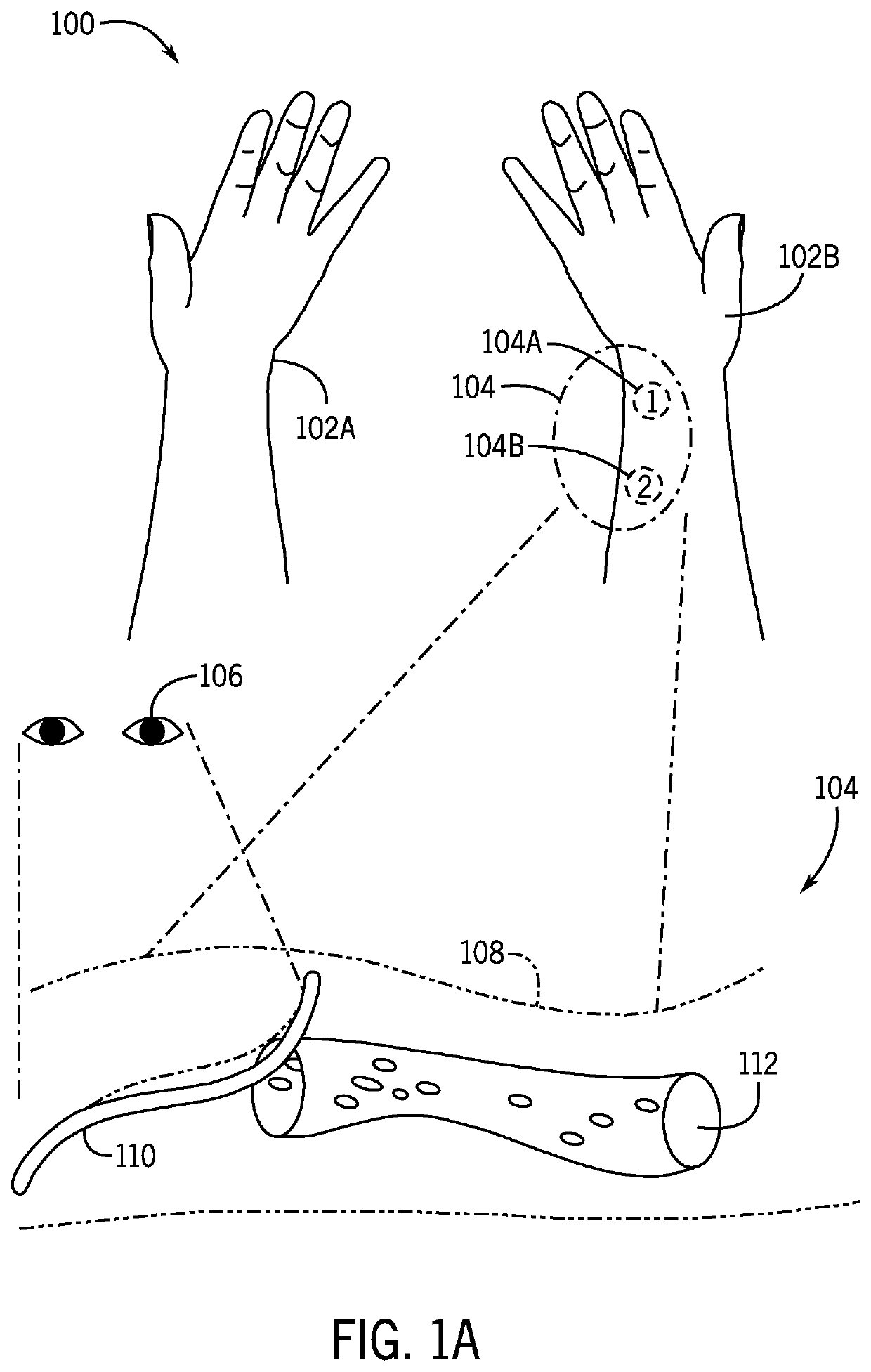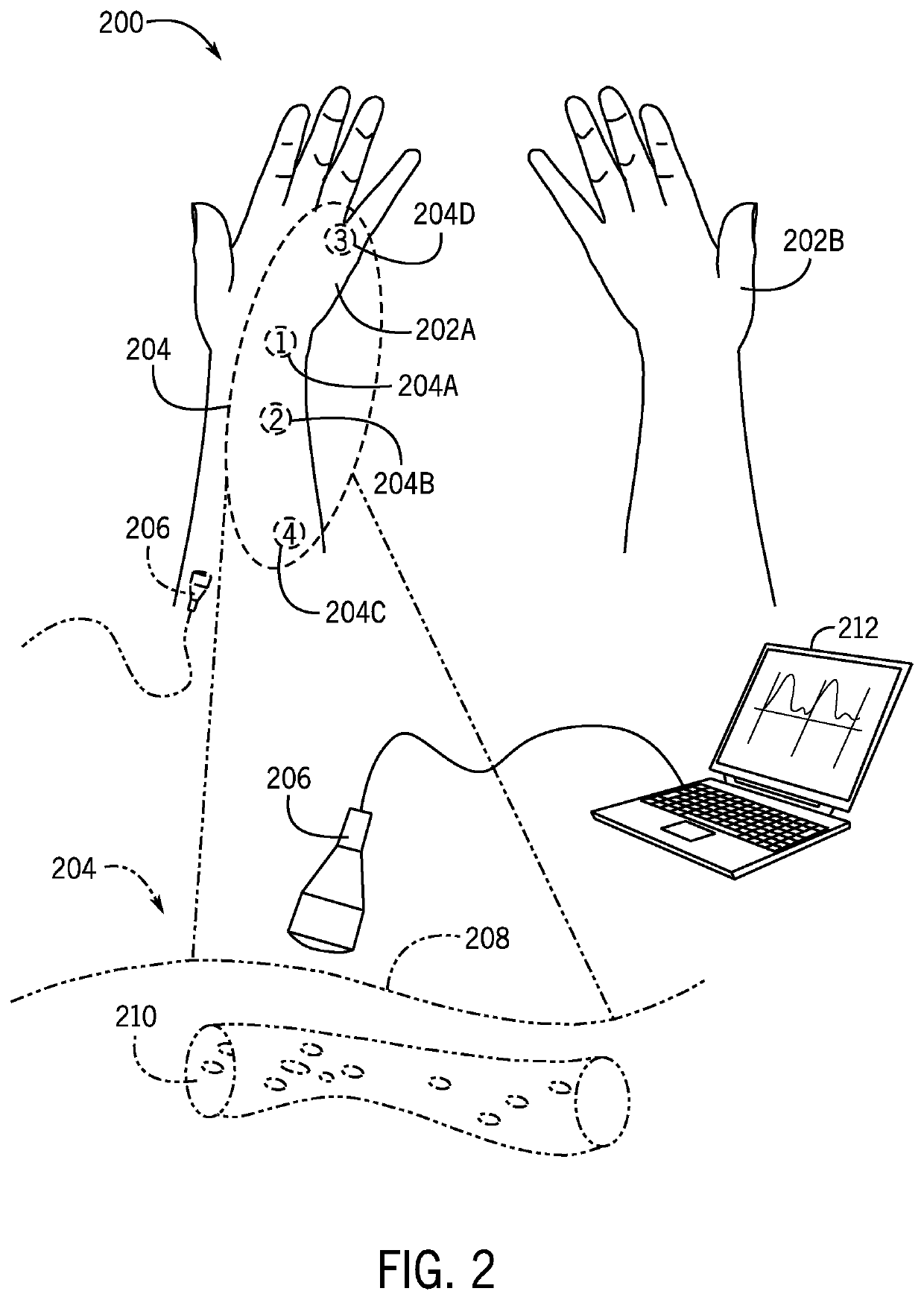Computer-supported intraneural facilitation for vascular changes
a technology of intraneural facilitation and computer support, applied in the field of intraneural facilitation, can solve the problems of ischemic paravertebral ganglion, neuropathy is not resolved, and the improved circulation of plantar nerves may not reach the ischemic paravertebral ganglion
- Summary
- Abstract
- Description
- Claims
- Application Information
AI Technical Summary
Benefits of technology
Problems solved by technology
Method used
Image
Examples
example 1
Statistical Analysis of Anterograde / Retrograde Waveforms
[0088]In an embodiment of the present disclosure, a probe is applied to pressure points in a human subject. Pressure points may be chosen for their proximity to the area under neuropathy.
[0089]Following the application of the probe to the pressure points of the human subject, an ultrasound machine may be used to process signals received from the probe. The ultrasound machine may provide at least the following information upon processing each of the received signals:[0090]a. Anterograde PI (AP)[0091]b. Anterograde volume flow (AV)[0092]c. Retrograde PI (RP)[0093]d. Retrograde volume flow (RV)
[0094]The above information may be used to determine whether distal or local control causes neuropathy. The information also may be used to determine whether inflammation is in a circulation of nerves distal to the probe or created from nerves proximal to the probe. Consequently, circulation in the neurovascular tissue can be mobilized or sh...
example 2
Ultrasound Guided Administration of INF
[0118]The following example provides those of ordinary skilled in the art with specific embodiments of a computer-implemented method for administering INF treatment as used in clinical settings to treat chemotherapy-induced peripheral neuropathy (CIPN) in a human subject, for example at a foot, within the scope of the present disclosure. Chemotherapy-induced peripheral neuropathy (CIPN) often accompanied by pain, tingling, and sensitivity in the hands and feet. According to an embodiment of the present disclosure, a probe is applied to pressure points adjacent the foot of the human subject to obtain information from at least the following arteries:[0119]a. The posterior tibial artery[0120]b. The peroneal artery[0121]c. The popliteal artery
[0122]Following the application of the probe to the pressure points adjacent the foot, an ultrasound machine may be used to process signals received from the probe. The ultrasound machine may provide at least ...
PUM
 Login to View More
Login to View More Abstract
Description
Claims
Application Information
 Login to View More
Login to View More - R&D
- Intellectual Property
- Life Sciences
- Materials
- Tech Scout
- Unparalleled Data Quality
- Higher Quality Content
- 60% Fewer Hallucinations
Browse by: Latest US Patents, China's latest patents, Technical Efficacy Thesaurus, Application Domain, Technology Topic, Popular Technical Reports.
© 2025 PatSnap. All rights reserved.Legal|Privacy policy|Modern Slavery Act Transparency Statement|Sitemap|About US| Contact US: help@patsnap.com



